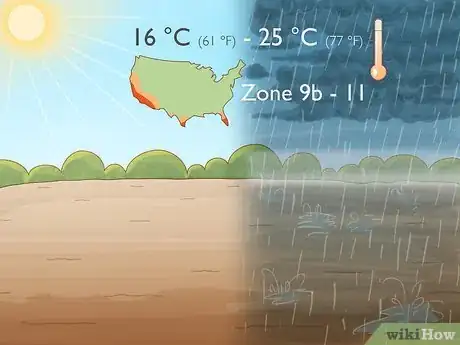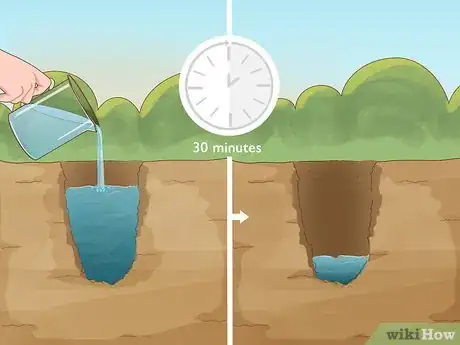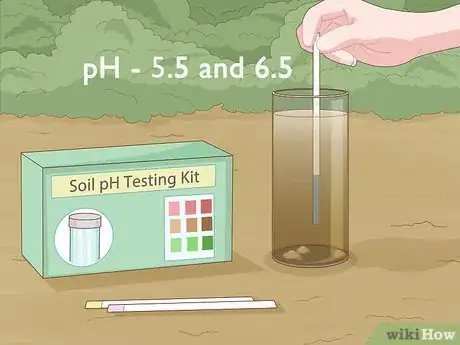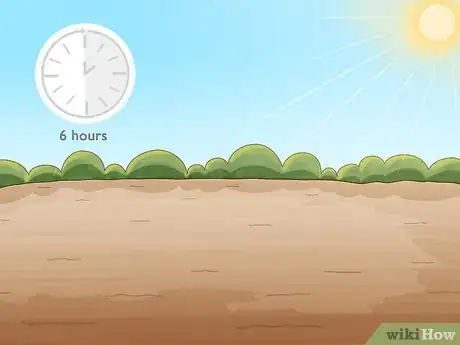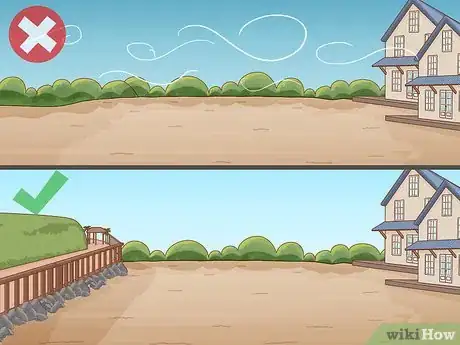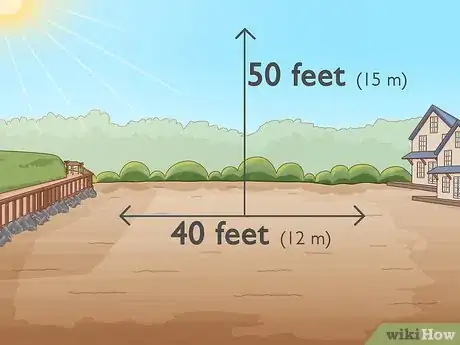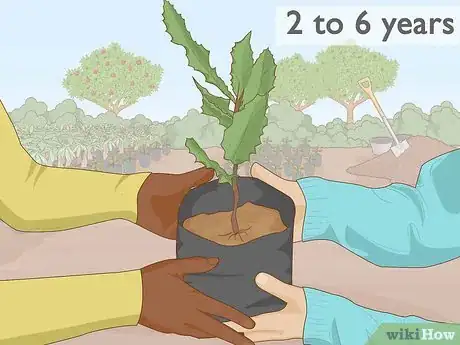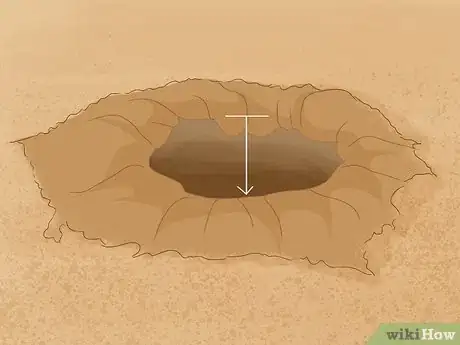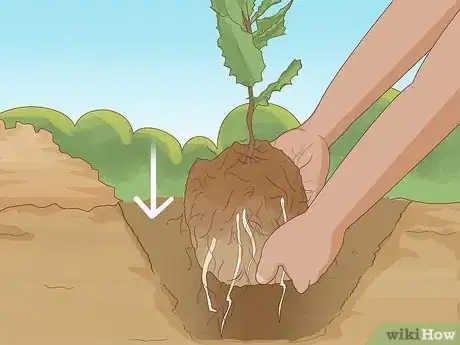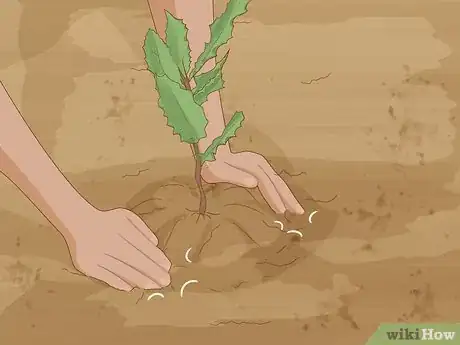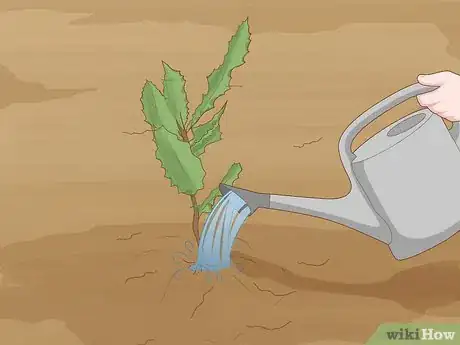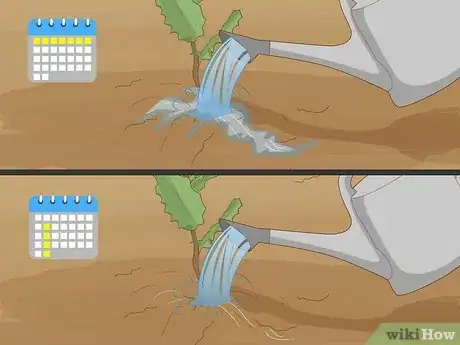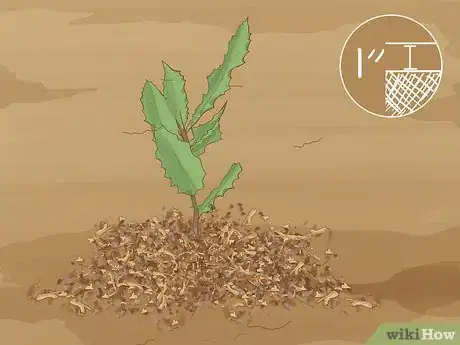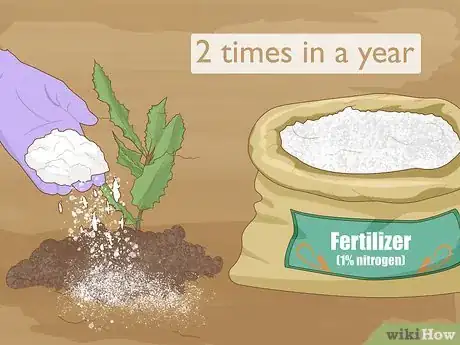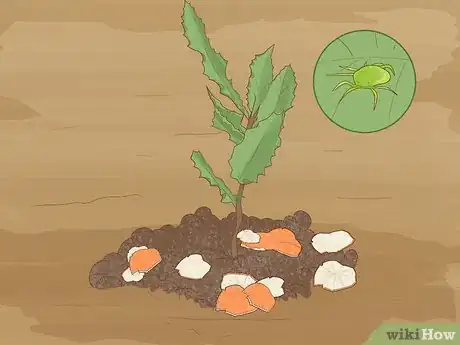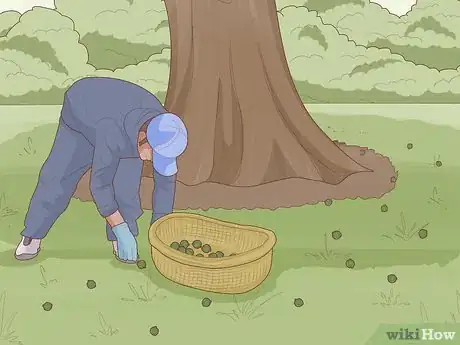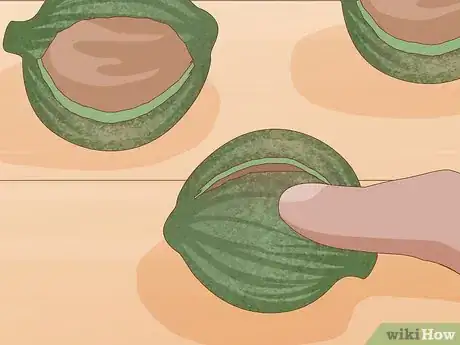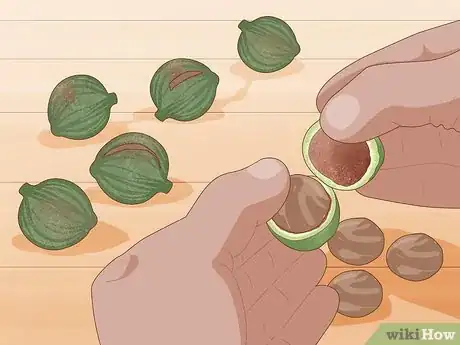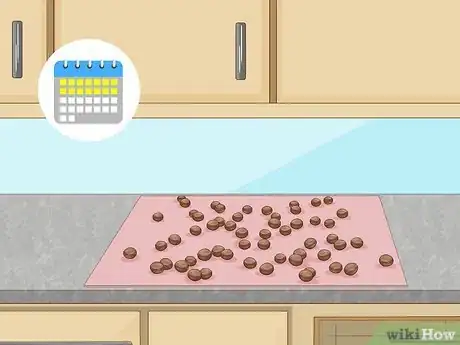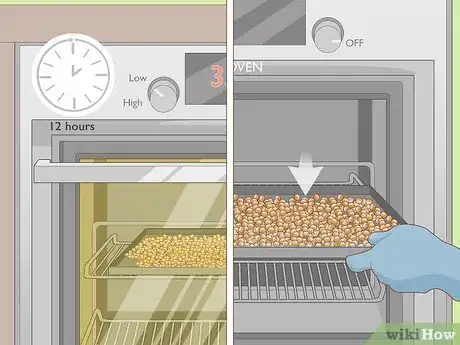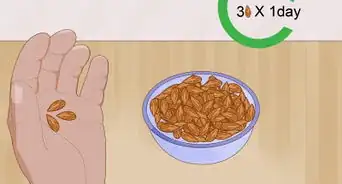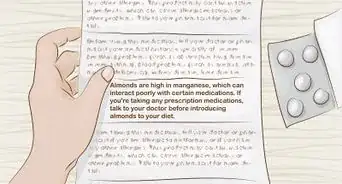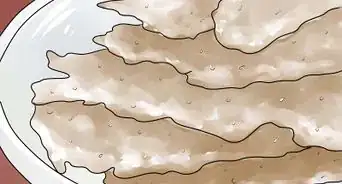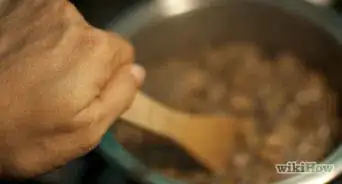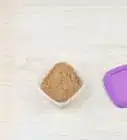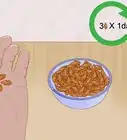This article was co-authored by wikiHow Staff. Our trained team of editors and researchers validate articles for accuracy and comprehensiveness. wikiHow's Content Management Team carefully monitors the work from our editorial staff to ensure that each article is backed by trusted research and meets our high quality standards.
This article has been viewed 14,085 times.
Learn more...
Macadamia nuts are well-known as a delicious and rich, yet pricey nut. Anyone who wants to grow macadamia nuts in their garden or yard has to be ready for a long-term commitment, since the trees can take as long as a decade to grow, and tend to grow best in tropical regions. If you are committed to growing a macadamia tree, you’ll need to find the right place to grow one, transplant a sapling, and help it grow big and tall. One your tree has grown up, you’ll have the sweet and crunchy nuts growing right in your backyard.
Steps
Choosing a Planting Location
-
1Grow the tree in a warm, wet climate for best results. So long as winters in your region don’t get below freezing very often and the weather is frequently wet, your climate is just about right for growing nuts from a macadamia tree. The best temperature range is between 16 °C (61 °F) and 25 °C (77 °F).[1]
- The USDA Hardiness Zone rating range for macadamia trees is between 9b to 11.[2]
- Be aware that if you live in a cold and dry area, you may not be able to grow your own macadamia tree.
-
2Choose a location with firm, well-draining soil. Your graft will grow best in soil that can support the roots, but won’t get too full or saturated when you water it. Pour a glass of water on the ground and see if the dirt moves around or stays in place, and then check back in 30 minutes to see if the spot is still full of water.[3]Advertisement
-
3Use test strips to check that the pH is between 5.5 and 6.5. You can purchase pH test strips at specialty gardening stores. Simply combine a sample of the soil with some distilled water to make a mixture with the texture of a thick milkshake. Dip the strip in the mixture for 20 to 30 seconds and check your results on the kit’s key.[4]
- If you need to adjust your soil's pH, you can add lime to increase it and organic materials or sulfur to decrease it.
-
4Make sure the tree will have full sun. Any bright area in your yard or garden will work, though an area that gets at least 6 hours each day of direct sunlight will be best for growing your tree, as that amount of light qualifies the growing spot as having full sun.
- If other plants or structures block the area’s sun, remove them or find another spot.
-
5Find a spot with little-to-no wind exposure. Immature trees can get blown down easily in the first few years, so choose somewhere that the tree can be sheltered from the wind. Other nearby trees and houses that are far enough not to block light can be great wind-protectors.
-
6Pick a spot that can fit a 50 feet (15 m) tall and 40 feet (12 m)wide tree. The trees can grow up to be quite tall and wide, including the wide branches, so the spot where you plant the sapling needs to be able to accommodate a mature tree. Remove other plants and structures within that range to make room.
- Don’t plant other, smaller plants within 10 feet (3.0 m) of the sapling, as the plant’s shallow roots will spread over time.
Transplanting a Macadamia Graft
-
1Purchase a grafted sapling from a nursery. Growing macadamia trees from seeds can take 10 to 12 years before they first grow any fruit, and many never bear fruit at all. For more effective and quicker results, closer to 2 to 6 years, you can buy a graft from a healthy, mature macadamia tree to plant.[5]
- Grafted macadamia saplings usually cost around $60 to $100 USD, depending on the variety and quality of the heritage.
-
2Dig a hole as deep as the graft was originally planted. When you purchase your graft, ask the nursery how deep the tree was planted, and try to plant the graft at roughly the same depth. This will help the tree become accustomed to its new environment and make sure that its roots are at the right depth.[6]
-
3Set the grafted sapling in the hole. Gently stand the tree up in the hole you dug for it, making sure the top of the soil bound to the roots is roughly in line with the top of the hole.
- Double check that the sapling is vertical in the hole, as any leaning could affect the growth of the tree by blocking the roots or causing it to grow in unintended directions.
-
4Fill the hole with soil. Simply return the soil you removed to the hole, filling in any loose areas around the sapling’s roots. You will not need all of the soil you dug up, so just cover the sapling and fill the hole in enough that the tree doesn’t lean or look unstable.
- Never cover the sapling’s trunk with soil. The entire plant should come up from the ground, with only the roots in the hole.
-
5Water the graft heavily. Let your first few waterings really soak into the ground around the graft. More water at the start will help the tree establish its roots and recover from the shock of replanting. The soil should clearly be wet, but not so wet that there is standing water.[7]
- If mold or fungus appears at the base of the graft, stop watering for several days.
Growing and Maintaining Your Tree
-
1Water your tree regularly during its first year and once a week after that. Your macadamia tree will need lots of water as it begins to grow. Try watering every 3 days, and switch to every other day if the tree looks dehydrated and dry. After the first year, you only need to water the tree once a week.[8]
- During droughts, water the plant every other day.
-
2Add mulch to the soil around the macadamia tree. For the first few years, add mulch to the soil around the tree every few months. You can use any common kind of mulch, and it should surround the tree at a depth of around 1 inch (2.5 cm) to 2 inches (5.1 cm).
- Mulch helps the roots retain moisture and keep weeds from competing with the tree
-
3Fertilize the soil at least twice per year. Start 6 months after the tree has been planted, and then every 6 months from there. You only need around 5 pounds of fertilizer every time you fertilize to help a mature macadamia tree grow. Use a fertilizer that is labeled as less than 1% nitrogen.
- Fallen leaves and branches can act as a fertilizer for the tree, too. Let debris that the tree drops stay in the soil.
-
4Use an organic pesticide if needed, like oranges or chrysanthemums. Macadamia nuts rarely get affected by pests, but once in a while mites and other tiny insects might infect the tree. If the leaves begin to look at all damaged or eaten, spray a mixture of water and orange or chrysanthemum on the leaves.[9]
- Always spot test on the leaves before spraying the whole plant so that you know the pesticide isn’t harmful.
Harvesting the Nuts
-
1Pick up fallen nuts as soon as you see them. The best way to tell whether macadamia nuts are ripe is to wait for them to fall on their own. Always gather the nuts as soon as you see them on the ground, and check for mold, rot, or damage caused by an animal trying to eat the nuts.
- You can also shake the branches to loosen almost-ripe nuts, though you will need to be careful not to damage the branches.
- Be aware that some of the nuts that fall when you shake the branches are likely to be unripe.
-
2Check regularly for cracks in the nuts’ skins. If you plan to harvest ripe nuts just before they fall, inspect nuts on the branches for cracks in the skin. Macadamia nuts split open right before they fall, so a nut with a visible crack is most likely ready to eat.[10]
-
3Remove the husks from your macadamia harvest. Once you have gathered your tree’s macadamia nuts, you will have to husk and dry them to prevent mildew or mold from forming in the nut. Peel off the soft husk of the nut and throw it out or place it around the tree as a fertilizer.
-
4Air-dry the nuts for 2 to 3 weeks. Set the nuts in a dry place, out of the sun and out of reach from animals. Let them sit in place for between 2 and 3 weeks. Avoid touching or handling the nuts, as this can allow bacteria and moisture to get on the nuts.
- Try not to dry the nuts indoors unless there is nowhere to hide them from animals or the humidity is too high for them to dry.
-
5Bake the nuts at the lowest oven setting for 12 hours. After the nuts have air dried, you can get them ready to be preserved by putting them on a large, yet shallow sheet, dish, or pan in an oven set between 100 °F (38 °C) and 115 °F (46 °C). Let the nuts dry in the oven for around 12 hours.
- Check regularly to make sure the nuts aren’t burning or cooking.
- Never use a higher heat setting, as overheating or cooking the nuts can spoil them.
Things You’ll Need
- Grafted macadamia sapling
- Planting shovel
- pH test strip kit
- Mulch
- 1% nitrogen fertilizer
- Organic pesticide
- Baking sheet
- Oven
References
- ↑ https://balconygardenweb.com/how-to-grow-macadamia-growing-macadamia-nuts/
- ↑ https://davesgarden.com/guides/pf/go/58270/
- ↑ https://balconygardenweb.com/how-to-grow-macadamia-growing-macadamia-nuts/
- ↑ https://mikesbackyardnursery.com/2015/02/complete-guide-to-soil-ph-testing
- ↑ https://balconygardenweb.com/how-to-grow-macadamia-growing-macadamia-nuts/
- ↑ https://balconygardenweb.com/how-to-grow-macadamia-growing-macadamia-nuts/
- ↑ https://balconygardenweb.com/how-to-grow-macadamia-growing-macadamia-nuts/
- ↑ https://balconygardenweb.com/how-to-grow-macadamia-growing-macadamia-nuts/
- ↑ https://balconygardenweb.com/how-to-grow-macadamia-growing-macadamia-nuts/
